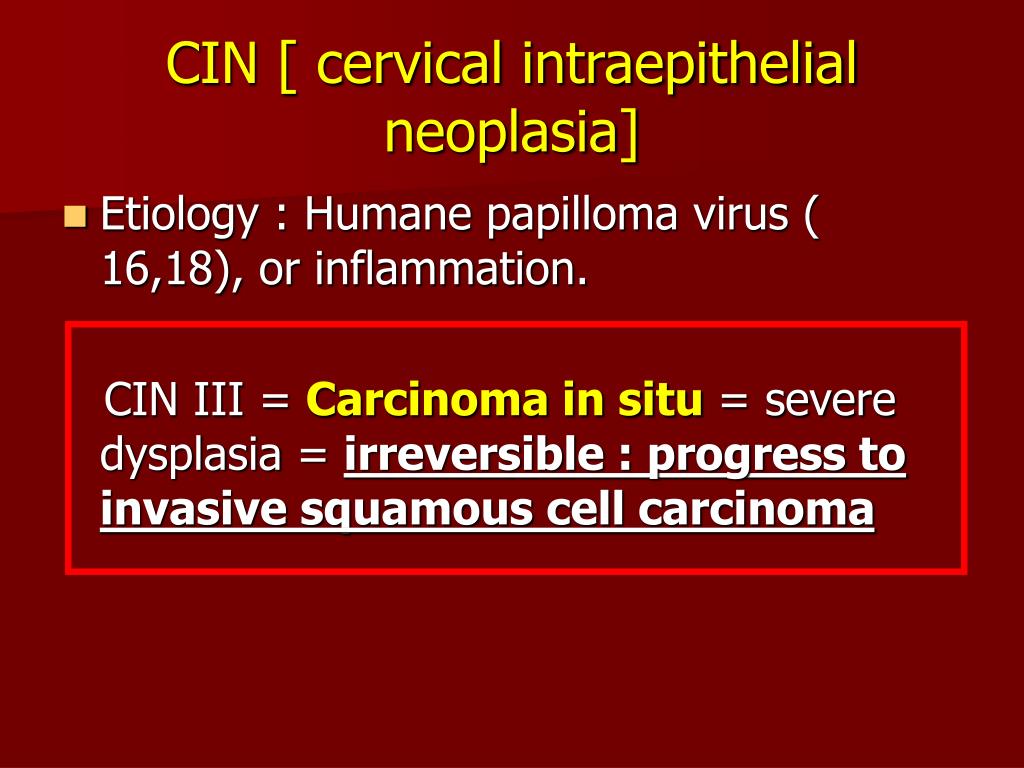Levels of cervical dysplasia. Cervical Dysplasia: Levels, Causes, and Treatment Options
What is cervical dysplasia. How is it diagnosed. What are the risk factors for developing cervical dysplasia. Can cervical dysplasia be prevented. What treatment options are available for cervical dysplasia.
Understanding Cervical Dysplasia: An Overview
Cervical dysplasia is a condition characterized by the presence of abnormal or precancerous cells in and around a woman’s cervix. The cervix, which is the lower part of the uterus, connects to the vagina and plays a crucial role in reproductive health. While cervical dysplasia itself is not cancer, it can potentially lead to cervical cancer if left untreated.
The severity of cervical dysplasia is classified into different levels, ranging from mild to severe. These classifications help healthcare providers determine the most appropriate course of action for each patient. It’s important to note that cervical dysplasia often doesn’t present any noticeable symptoms, which is why regular screening is essential for early detection and prevention of potential complications.

Causes and Risk Factors of Cervical Dysplasia
The primary cause of cervical dysplasia is infection with the human papillomavirus (HPV). There are over 200 different types of HPV, with approximately 40 affecting the genital area. While most HPV infections are considered low-risk for cancer, about 12 types are classified as high-risk. Among these, HPV types 16 and 18 are responsible for approximately 70% of cervical cancer cases.
Several factors can increase a person’s risk of developing cervical dysplasia:
- Early onset of sexual activity (before age 18)
- Multiple sexual partners
- Compromised immune system
- Tobacco use (smoking or chewing)
- Not using condoms during sexual intercourse
- Giving birth at a young age (before 16)
- Not receiving the HPV vaccine
Understanding these risk factors can help individuals make informed decisions about their sexual health and lifestyle choices to reduce their chances of developing cervical dysplasia.
Diagnostic Procedures for Cervical Dysplasia
How is cervical dysplasia detected? The primary method for detecting cervical dysplasia is through a routine Pap test, also known as a Pap smear. During this procedure, a healthcare provider collects a sample of cells from the cervix, which is then sent to a laboratory for analysis. The results of a Pap test can be classified as normal, inconclusive, or abnormal.

If the Pap test results are abnormal, further testing may be required. This often involves a colposcopy, an in-office procedure that allows for a closer examination of the cervix. During a colposcopy, the healthcare provider may take a small biopsy of the cervical tissue for further analysis.
Cervical dysplasia found on a biopsy is classified as cervical intraepithelial neoplasia (CIN), with three levels of severity:
- CIN I: Mild dysplasia
- CIN II: Moderate to marked dysplasia
- CIN III: Severe dysplasia to carcinoma in situ
In addition to the Pap test and colposcopy, an HPV test may be performed to identify the presence and type of HPV infection. This information can help guide treatment decisions and assess the risk of progression to cervical cancer.
Prevention Strategies for Cervical Dysplasia
Can cervical dysplasia be prevented? While it’s not always possible to completely prevent cervical dysplasia, there are several steps individuals can take to reduce their risk:
- Get the HPV vaccine: This is considered the most effective prevention method, especially when administered before the onset of sexual activity.
- Practice safe sex: Using condoms and limiting sexual partners can help reduce the risk of HPV transmission.
- Avoid tobacco use: Smoking and chewing tobacco have been linked to an increased risk of cervical dysplasia.
- Delay sexual activity: Postponing sexual activity until later in life can reduce the risk of HPV infection.
- Attend regular screenings: Following recommended guidelines for Pap tests and HPV screenings can help detect any abnormalities early.
It’s important to note that while these strategies can significantly reduce the risk of cervical dysplasia, they do not guarantee complete prevention. Regular screenings remain crucial for early detection and treatment.
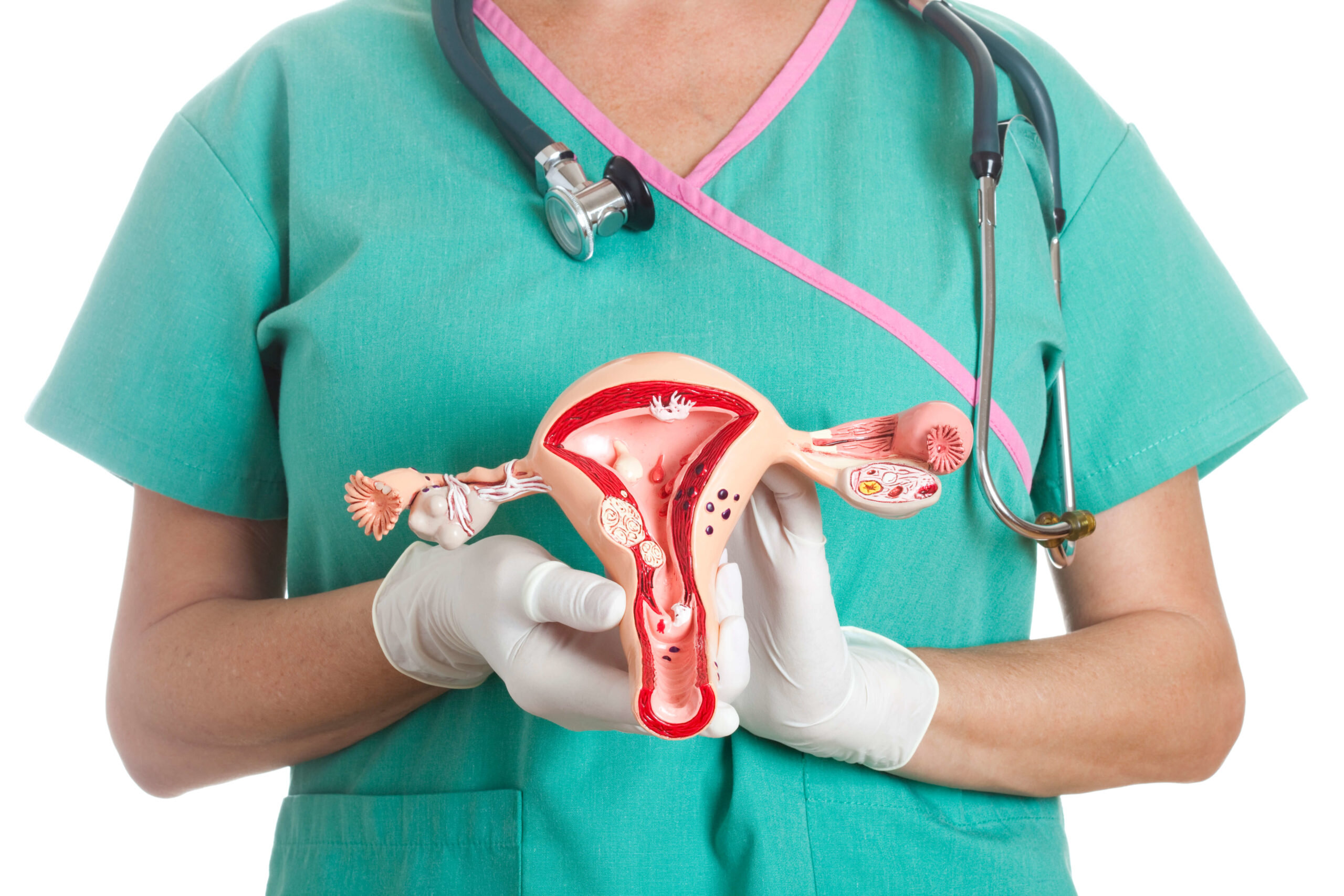
Treatment Options for Cervical Dysplasia
What are the available treatments for cervical dysplasia? The approach to treating cervical dysplasia depends on the severity of the condition and the patient’s medical history. In many cases of mild cervical dysplasia, no immediate treatment is necessary, as the abnormal cells may resolve on their own. However, healthcare providers may recommend more frequent Pap tests to monitor the situation closely.
For moderate to severe cases of cervical dysplasia, several treatment options are available:
- Cryosurgery: This procedure uses extreme cold to freeze and destroy abnormal cells.
- Loop Electrosurgical Excision Procedure (LEEP): A thin wire loop is used to remove abnormal tissue from the cervix.
- Cone biopsy: A cone-shaped piece of tissue is removed from the cervix for further examination and treatment.
- Laser therapy: High-energy light is used to destroy abnormal cells.
The choice of treatment depends on factors such as the severity of the dysplasia, the patient’s age, overall health, and desire for future pregnancies. It’s important for patients to discuss all available options with their healthcare provider to determine the most appropriate course of action.
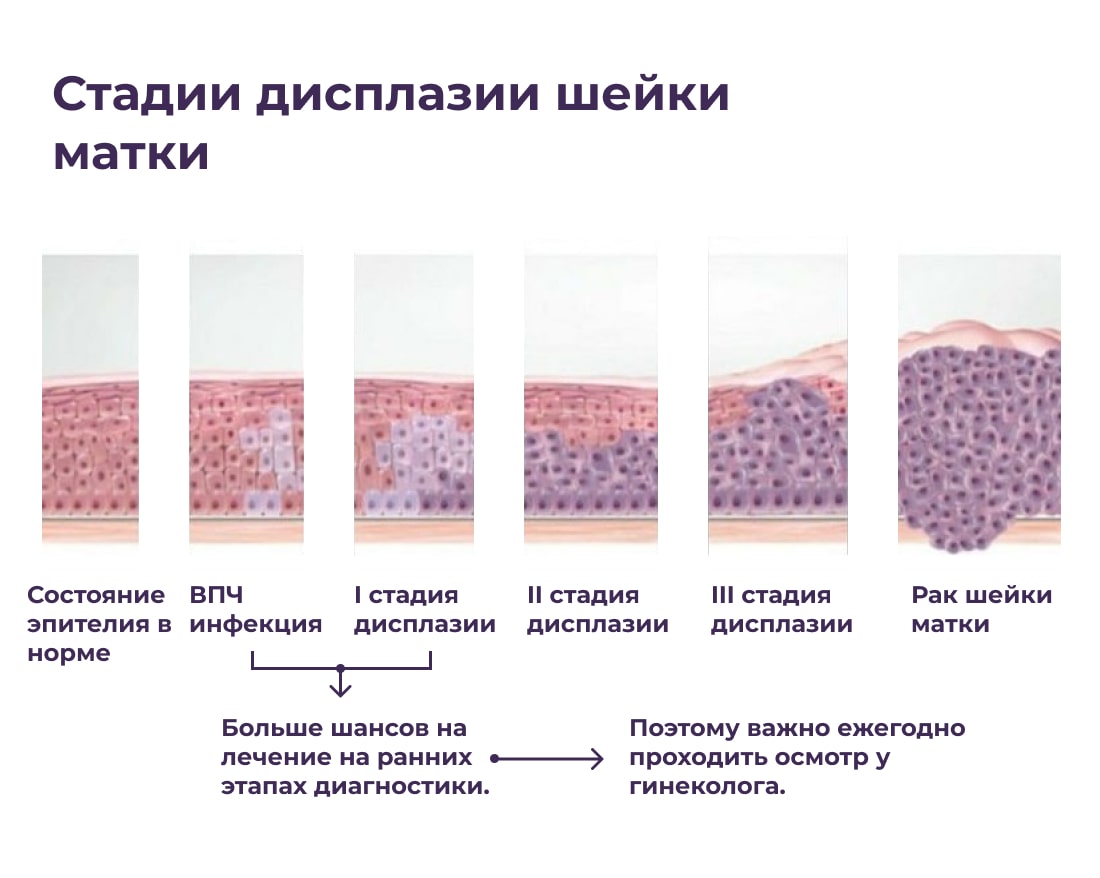
The Role of HPV Vaccination in Cervical Dysplasia Prevention
How effective is the HPV vaccine in preventing cervical dysplasia? The HPV vaccine has proven to be highly effective in reducing the risk of HPV infection and, consequently, cervical dysplasia. The vaccine is recommended for both girls and boys, ideally between the ages of 9 and 26, before they become sexually active.
The vaccine protects against the most common high-risk HPV types, including types 16 and 18, which are responsible for the majority of cervical cancer cases. While the vaccine doesn’t provide protection against all HPV types, it significantly reduces the risk of developing cervical dysplasia and cervical cancer.
It’s important to note that even individuals who have received the HPV vaccine should still undergo regular cervical cancer screenings, as the vaccine does not provide 100% protection against all HPV types that can cause cervical dysplasia.
Long-term Outlook and Follow-up Care for Cervical Dysplasia
What is the prognosis for individuals diagnosed with cervical dysplasia? The long-term outlook for people with cervical dysplasia is generally positive, especially when the condition is detected and treated early. Most cases of mild dysplasia (CIN I) resolve on their own without treatment, while moderate to severe cases (CIN II and III) can be effectively treated with various procedures.

After treatment for cervical dysplasia, follow-up care is crucial to ensure the abnormal cells have been completely removed and to monitor for any recurrence. This typically involves more frequent Pap tests and HPV testing for several years following treatment.
It’s important for individuals who have been diagnosed with cervical dysplasia to maintain open communication with their healthcare providers and adhere to recommended screening schedules. By doing so, they can significantly reduce their risk of developing cervical cancer and ensure any recurrence is detected and treated promptly.
Emotional and Psychological Impact of Cervical Dysplasia Diagnosis
How does a cervical dysplasia diagnosis affect a person’s mental health? Receiving a diagnosis of cervical dysplasia can be emotionally challenging for many individuals. It’s common to experience feelings of anxiety, fear, and uncertainty about one’s health and future. Some people may also feel a sense of guilt or shame, particularly if they associate the diagnosis with their sexual history.

It’s important for healthcare providers to address these emotional concerns and provide support and resources to help patients cope with their diagnosis. This may include referrals to counseling services, support groups, or educational materials that can help patients better understand their condition and treatment options.
By addressing both the physical and emotional aspects of cervical dysplasia, healthcare providers can help ensure comprehensive care and improve overall outcomes for their patients.
What Is Cervical Dysplasia? – Treatment & Prevention
What is cervical dysplasia?
Cervical dysplasia is when there are abnormal, or precancerous, cells in and around a woman’s cervix. The vagina opens up into the cervix, which is the lower part of the uterus.
Cervical dysplasia is detected by a pap test (pap smear). It’s diagnosed with a biopsy. Abnormal changes in cells can be mild, moderate, or severe. The presence of cervical dysplasia doesn’t mean you have cervical cancer. But the cells could lead to cancer if they aren’t treated.
Symptoms of cervical dysplasia
People with cervical dysplasia don’t usually have symptoms. This is why it’s important to get screened regularly. The American Academy of Family Physicians (AAFP) recommends routine pap tests to diagnose cervical cancer early. You can check AAFP’s clinical guidelines (at the end of this article) to see when and how often you should be tested.
What causes cervical dysplasia?
The cells on your cervix can change over time. This means that you can develop cervical dysplasia at almost any age.
This means that you can develop cervical dysplasia at almost any age.
HPV is the primary cause of cervical dysplasia. There are more than 200 different HPV viruses. About 40 of these affect the genitals. The viruses are spread through sexual contact. Most viruses are low risk for cancer. About 12 are high risk. High-risk HPV types 16 and 18 cause about 70 percent of cervical cancer cases.
In the United States, HPV is the most common sexually transmitted infection.
There are several factors that can increase your risk of cervical dysplasia:
- Becoming sexually active before age 18
- Having a high number of sexual partners
- Having illnesses or using medicines that lower your immune system
- Smoking or chewing tobacco
- Not using condoms (while condoms help prevent HPV, they don’t fully protect you)
- Giving birth before age 16
- Not getting the HPV vaccine
How is cervical dysplasia diagnosed?
Cervical dysplasia is typically detected during a routine pap test. For this test, your doctor swabs your cervix to collect a sample of cells. This is generally not painful. The cells are then sent to a lab. It can take up to 3 weeks for the lab to process the test.
For this test, your doctor swabs your cervix to collect a sample of cells. This is generally not painful. The cells are then sent to a lab. It can take up to 3 weeks for the lab to process the test.
The pap test results can be normal, inconclusive, or abnormal. If normal, you should follow AAFP’s recommendation for regular pap tests.
Inconclusive results don’t indicate cervical dysplasia. You could have a simple infection in your cervix or vagina. Your doctor may order a repeat pap test. Further action or diagnoses will depend on your age and medical history.
An abnormal result is known as cervical dysplasia. It’s called a squamous intraepithelial lesion (SIL). On the pap test, the precancerous cells may be classified as:
- Low-grade SIL (LSIL), indicating mild abnormality
- High-grade SIL (HSIL), indicating moderate to severe abnormality
- Atypical glandular or squamous cells (ASCUS)
Additional testing is needed to see if the cell changes are mild, moderate, or severe. A colposcopy is an in-office procedure that gives your doctor a closer look at your cervix. He or she may take a biopsy of the cervix to help identify the abnormal area. These biopsies are small and don’t cause much discomfort.
A colposcopy is an in-office procedure that gives your doctor a closer look at your cervix. He or she may take a biopsy of the cervix to help identify the abnormal area. These biopsies are small and don’t cause much discomfort.
Cervical dysplasia that is found on a biopsy is called cervical intraepithelial neoplasia (CIN). There are 3 levels:
- CIN I (mild dysplasia)
- CIN II (moderate to marked dysplasia)
- CIN III (severe dysplasia to carcinoma in situ)
An HPV test can be completed at the same time or separately as the pap test. It will identify the presence and type of HPV.
Can cervical dysplasia be prevented or avoided?
The best way to prevent cervical dysplasia is to get the HPV vaccine. It’s proven to lower your risk of HPV. It doesn’t fully prevent cervical dysplasia. Consult your doctor to know if you meet all criteria for the vaccine. For best results, girls and boys between the ages of 9 and 26 should get vaccinated before becoming sexually active.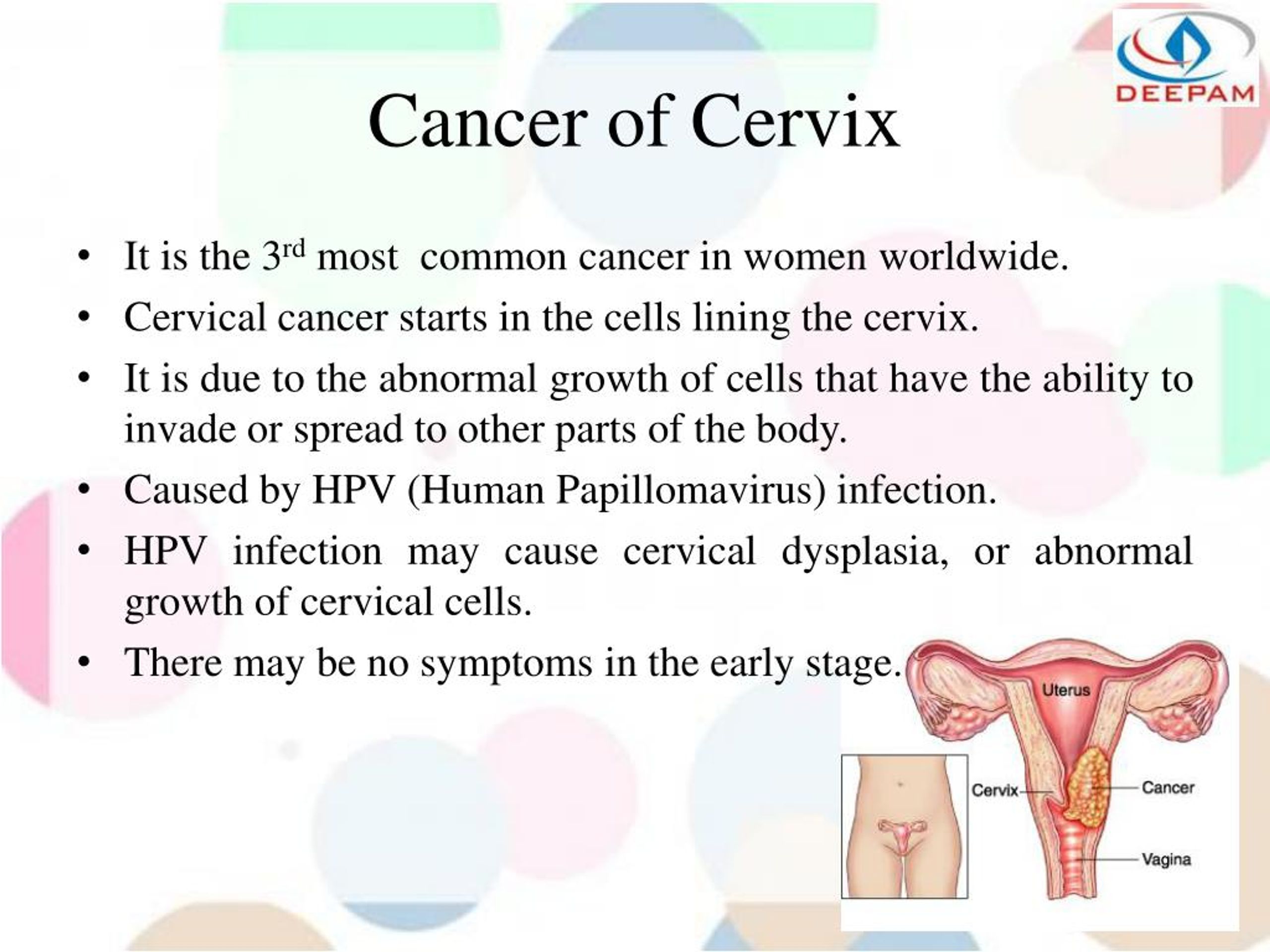 However, vaccination can be helpful after onset of sexual activity and up to age 45. Consult your doctor to discuss the vaccine criteria and if you should be vaccinated.
However, vaccination can be helpful after onset of sexual activity and up to age 45. Consult your doctor to discuss the vaccine criteria and if you should be vaccinated.
You can also take the following steps to reduce your risk of developing cervical dysplasia:
- Get the HPV vaccine if you’re between the ages of 9 and 26.
- Don’t smoke.
- Delay the onset of sexual activity as long as possible or until you are in a long-term relationship.
- Use a condom whenever you have sex.
- Have as few sexual partners as possible.
Cervical dysplasia treatment
Treatment for cervical dysplasia will depend on the degree of abnormal cells and your medical history. Most mild cases will clear up without treatment. Your doctor may suggest getting a pap test every 6 to 12 months, instead of every 3 to 5 years. But if the changes don’t go away or get worse, treatment will be needed.
Instances of moderate or severe cervical dysplasia could require immediate treatment. Options include:
Options include:
- Cryosurgery to freeze off the abnormal cervical tissue
- LEEP (loop electrosurgical excision procedure) to burn off the abnormal cells with an electric looped wire
- Surgery to remove the abnormal cells with a laser, scalpel, or both
Rare cases of severe cervical dysplasia could require a hysterectomy to fully remove the cervix.
Living with cervical dysplasia
Early diagnosis and prompt treatment cures most cases of cervical dysplasia. Follow your doctor’s and AAFP’s screening recommendations for early detection.
Once treated, cervical dysplasia can return. People who have severe cervical dysplasia, high-risk HPV, or whose condition goes untreated could develop cervical cancer.
Questions to ask your doctor
- Can I get the HPV vaccine?
- How can I prevent cervical dysplasia?
- Does cervical dysplasia or HPV affect my chances of getting pregnant?
- Is there an HPV test for men?
- If my partner tested positive for HPV, can he or she give it to me? What about same-sex partners?
Resources
American Academy of Family Physicians: Cervical Cancer Clinical Preventive Service Recommendation
Centers for Disease Control and Prevention: Cervical Cancer Screening
National Institutes of Health, MedlinePlus: HPV Vaccine
Cervical dysplasia
This page was reviewed under our medical and editorial policy by
Ruchi Garg, MD, Chair, Gynecologic Oncology, City of Hope Atlanta, Chicago and Phoenix.
This page was reviewed on January 21, 2022.
The cervix is the lower portion of the uterus that connects to the vagina. Changes to the cells that line the cervix can be early precursors to cervical cancer, which happens when abnormal cells begin to grow and spread in an uncontrolled manner. Cervical dysplasia isn’t cancer, but treating it may help you prevent cervical cancer from developing in the future.
What is cervical dysplasia?
Precancerous cervical cell changes are referred to as cervical dysplasia, cervical intraepithelial neoplasia (CIN) and squamous intraepithelial lesion (SIL). All cervical cancers begin with these cellular changes, but not all women with cervical dysplasia will go on to develop cancer. In most cases, cervical dysplasia resolves on its own without treatment. In some instances cervical dysplasia must be treated. The good news is treatment almost always prevents cervical cancer from forming.
After cervical cell samples are evaluated in a laboratory, cervical dysplasia is ranked from 1 to 3 on a scale of increasing severity, and the cervical dysplasia stages may be described as mild, moderate or severe.
- CIN1 (mild dysplasia/low-grade SIL): The least severe type of dysplasia. Here, a small amount of tissue appears abnormal.
- CIN2 or CIN3 (moderate to severe dysplasia/high-grade SIL): These precancers are more serious, with a greater amount of tissue appearing abnormal.
Cervical dysplasia causes
The most common cause of cervical dysplasia is the human papillomavirus. Also known as HPV, this is a prevalent sexually transmitted virus, spreading from person to person during skin-to-skin sexual contact. According to the Centers for Disease Control and Prevention (CDC), 91 percent of all cervical cancers are caused by HPV.
The CDC reports that at least 80 percent of women will have had HPV by age 50. And the American Cancer Society notes that there are more than 150 strains of HPV—14 of which are known to cause cervical cancer.
Although most cases of HPV go away on their own within two years, sometimes your body’s immune system is unable to fight off the infection, and it causes cervical dysplasia. The most common type of cervical cancer-causing HPV is HPV 16, which accounts for about half of all cervical cancers caused by this virus. Others include HPV 18, 31, 33, 35, 39, 45, 51, 52, 56, 58, 59, 66 and 68.
The most common type of cervical cancer-causing HPV is HPV 16, which accounts for about half of all cervical cancers caused by this virus. Others include HPV 18, 31, 33, 35, 39, 45, 51, 52, 56, 58, 59, 66 and 68.
Cervical dysplasia risk factors
Several risk factors may increase your odds of developing cervical dysplasia, including:
- Smoking
- Multiple sex partners
- Human immunodeficiency virus (HIV)
- Having sex before age 18
- Giving birth before age 20
- Immunosuppressant drugs for example status-post organ transplant
- Maternal exposure to DES (diethylstilbestrol)
- Three or more full-term pregnancies
- Family history of cervical cancer
Not everyone with these risk factors will develop cervical dysplasia, but if you’re experiencing them, it’s a good idea to discuss them with your physician. That way, your provider is better able to tailor your screening frequency to your individual risk level.
Cervical dysplasia symptoms
Typically, there are no symptoms associated with cervical dysplasia, so it’s important to undergo regular Pap tests or cervical cancer screenings on a schedule recommended by your doctor so your care team can monitor for cervical dysplasia and look for signs of cervical cancer.
HPV testing will likely also be performed at this time. During a Pap test, your doctor will collect a sample—or smear—of cervical cells to be checked for abnormalities. If any are found, further testing may be recommended. Because cervical cancer is slow-growing, precancerous changes are usually caught early.
If dysplasia has advanced to cervical cancer, you may experience symptoms such as:
- Abnormal bleeding
- Vaginal discharge
- Painful sex
- Back and pelvic pain
Cervical dysplasia diagnosis
Abnormal changes to cervical cells may be detected through a Pap smear. Cells that are collected during a Pap test are viewed microscopically in order to determine if cervical dysplasia is present. Cellular changes to the cervix are characterized in the following ways:
Cellular changes to the cervix are characterized in the following ways:
- LSIL, or low-grade squamous intraepithelial lesion
- HSIL, or high-grade squamous intraepithelial lesion
- Possibly malignant
- AGC, or atypical glandular cells
- ASC, or atypical squamous cells
In cases of mild dysplasia, your doctor will likely monitor with future Pap tests or may refer for further testing with colposcopy. If the dysplasia is more severe, usually colposcopy is recommended. During a colposcopy, an instrument called a colposcope is used to view the cells more closely, and a biopsy of the area of concern may be taken.
Dysplasia results from a biopsy are referred to as cervical intraepithelial neoplasia (CIN) and categorized as follows:
- CIN1, mild dysplasia
- CIN2, moderate to marked dysplasia
- CIN3, severe dysplasia or carcinoma in situ
These terms can be a handful. Your doctor can help you understand what your results mean. Always ask questions. This can help you share decision-making with your care team.
Always ask questions. This can help you share decision-making with your care team.
Cervical dysplasia treatment
Most often, mild cervical dysplasia will go away on its own without treatment. However, in more severe cases, treatment may be recommended. Treatment for cervical dysplasia may consist of:
- Cryosurgery, a procedure to freeze abnormal cervical cells
- Laser therapy, to burn abnormal cells
- Loop electrosurgical excision procedure (LEEP), a tissue-removal procedure using electrocautery
- Cone biopsy, which is surgery to remove the abnormal area of tissue
- Hysterectomy, the surgical removal of the uterus and cervix
If you have cervical dysplasia, your doctor may recommend increasing the frequency of your Pap tests to monitor cellular changes. If any signs of cervical cancer are noted, it’s important to work with a gynecologic cancer specialist to plan out your treatment regimen.
Cervical dysplasia: symptoms, diagnosis, treatment
- Directions
Specialists
Price
Reviews
Stock
Sign upElectronic direction
8 812 565-18-40
An expert approach to happiness!
Our branches
Assisted reproductive technologies
Obstetrics
and gynecology
Medical center
fetus
Urology
and andrology
Assisted Reproductive Technologies
obstetrics and gynecology
Center for Fetal Medicine
Urology and Andrology
St. Petersburg, Torez Avenue 72
Petersburg, Torez Avenue 72
Center for Reproduction and Family Planning Medica in St. PetersburgServicesCervical Dysplasia
Cervical dysplasia is asymptomatic and can lead to cancer. In order not to lead to oncology, you need to know how to recognize and cure the disease in time.
Enroll
Contents
- How is dysplasia related to cancer?
- Stages of development of dysplasia
- Classification of the stages of development of cervical dysplasia
- Symptoms of cervical dysplasia
- Diagnostics
- Treatment of dysplasia
- Surgical treatments for cervical dysplasia:
- Is it possible to get pregnant if cervical dysplasia is diagnosed?
- Prevention of cervical dysplasia
How is dysplasia related to cancer?
Cervical dysplasia is a precancerous condition that occurs due to the gradual degeneration of mucosal cells.
In most cases, dysplasia is triggered by the human papillomavirus (HPV) after penetrating the tissues of the vaginal part of the cervix. Chronic inflammation of the cervix gradually develops, and altered cells begin to multiply in the tissues. The more of these cells, the higher the risk of cancer. Depending on the number of altered cells, the stages of cervical dysplasia are distinguished.
Stages of development of dysplasia
The surface of the mucous membrane of the cervix is lined with four layers of squamous epithelium. According to the international classification, there are three stages of dysplasia, which differ in the depth of damage to these layers by altered cells.
Cervical dysplasia staging
- Mild dysplasia (CIN 1)
- Moderate dysplasia (CIN 2)
- Severe dysplasia (CIN 3).
Dysplasia of the first degree, the mildest, is characterized by a small number of altered (atypical) cells, and they are detected in less than a third of the thickness of the epithelium. The risk of developing cervical cancer at this stage is up to 1%.
The risk of developing cervical cancer at this stage is up to 1%.
With dysplasia of the second stage, changes affect two of the four layers of the squamous epithelium, the lower and middle. This is a moderate dysplasia, it corresponds to a 5% risk of developing cervical cancer.
Dysplasia of the last stage is the most severe. At this stage, the affected cells penetrate into all layers of the squamous epithelium. The third stage corresponds to a 12% risk of developing cancer of the cervix.
Symptoms of cervical dysplasia
Cervical dysplasia does not have an independent manifestation and proceeds imperceptibly. It is believed that approximately 10% of women do not even realize that they have this disease.
Meanwhile, in women with cervical dysplasia, a microbial infection is more common, manifested by colpitis or cervicitis with corresponding symptoms such as burning, itching, unusual vaginal discharge (unusual color or with an unpleasant odor, sometimes bloody).
Such manifestations of ill health should alert a woman and become a reason for contacting a gynecologist and a thorough examination to detect cervical dysplasia.
Diagnostics
To diagnose cervical dysplasia, a comprehensive examination is performed. Methods used include:
- Colposcopy is a technique for examining the cervix using a colposcope apparatus under tenfold (or more) magnification. During the procedure, a targeted biopsy is performed: a small part of the epithelium is taken from a suspicious area of the mucosa and sent for histology. This is the name of a laboratory study that allows you to exclude a malignant process in the tissues and make an accurate diagnosis.
- Cytological examination of a smear (PAP test) is a laboratory method that allows you to detect atypical epithelial cells and markers of human papillomavirus infection. A cytological examination of a smear, along with a preventive examination by a gynecologist every six months or a year, should be done by all women.

- HPV analysis by PCR (polymerase chain reaction). This is the most accurate way to diagnose a virus that triggers the development of cervical dysplasia.
If necessary, the attending physician may prescribe additional studies to the patient, for example, refer her to cervicoscopy (diagnosing the condition of the mucous membrane of the cervical canal using a hysteroscope), an extended examination for urogenital infections, etc.
Treatment of dysplasia
Based on the results of the examination, the attending physician chooses a method for treating dysplasia. At the first stage, it is mandatory to carry out the therapy of concomitant diseases such as colpitis, cervicitis and other ailments that often accompany dysplasia.
After that, the process occurring at the 1st stage is usually just kept under control. The patient is recommended to come for a colposcopy examination at least once every six months. This is necessary so as not to lose time and take action if the disease begins to progress. Sometimes, after successful treatment of inflammatory diseases, stage 1 dysplasia regresses on its own.
Sometimes, after successful treatment of inflammatory diseases, stage 1 dysplasia regresses on its own.
But if the process, on the contrary, goes into a more difficult stage, the issue of surgical treatment is decided. Its goal is to remove the affected areas of the cervix, while completely preserving healthy tissue.
Surgical methods for the treatment of cervical dysplasia:
- Diathermocoagulation – a technique for cauterizing pathologically altered tissues with electric current;
- Cryotherapy – cauterization of affected tissues with liquid nitrogen;
- Laser vaporization – “evaporation” of a site of altered tissue with a laser beam;
- Knife conization of the cervix – removal of a cone-shaped area of tissue, including a pathologically altered area of the cervix and cervical canal. To remove using a radio wave knife or laser.
- Radio wave surgery is the gold standard in the treatment of cervical dysplasia. The principle of operation is based on the “evaporation” of altered cells – due to the structural features, they are the first to be destroyed under the influence of a non-contact radio wave knife, thanks to which healthy tissue can be kept intact in full.

- Amputation of the cervix. This measure is to combat stage 3 dysplasia, and is resorted to only as a last resort, when the process progresses rapidly and other methods of treatment are not applicable.
Is it possible to get pregnant if cervical dysplasia is diagnosed?
Pregnancy until dysplasia is cured is not recommended. Conceiving and bearing a child can accelerate the progression of the disease.
Prevention of cervical dysplasia
To prevent the development of dysplasia, you must first of all take care of your health: regularly visit a gynecologist, avoid hypothermia, and beware of sexually transmitted infections.
Treatment of inflammatory diseases is very important to complete.
Dysplasia is caused by the human papillomavirus, and the most oncogenic (cancer-causing) types of HPV 16 and 18 can be vaccinated today.
This is a great opportunity to protect yourself from infection and related problems.
Specialists
Sign up
Tanchuk
Elena Valerievna
Chief Physician of the MEDICA Family Planning Center,
obstetrician-gynecologist, gynecologist-endocrinologist, reproductologist, ultrasound doctor, doctor of the highest category. Experience 26 years
Volkova
Anna Valerievna
Obstetrician-gynecologist, ultrasound doctor, doctor of the first category, candidate of medical sciences. Experience 22 years.
Zakharova
Oksana Vadimovna
Deputy chief doctor for ART, obstetrician-gynecologist, reproductologist, gynecologist-endocrinologist, ultrasound doctor, doctor of the first category.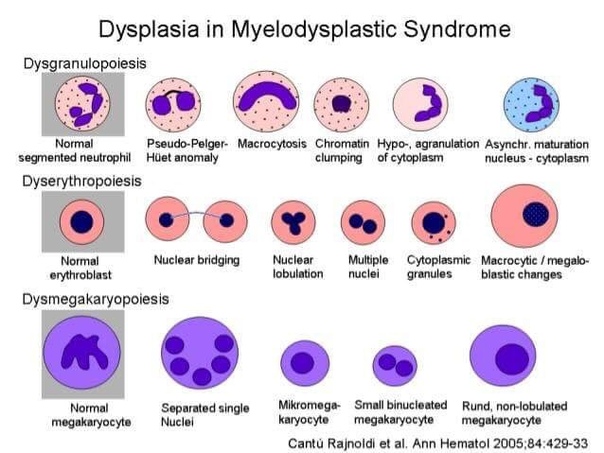 Experience 22 years.
Experience 22 years.
Danielyan
Roza Martunovna
Obstetrician-gynecologist, reproductologist, ultrasound doctor. Experience 11 years.
Samoilova
Svetlana Gennadievna
Obstetrician-gynecologist, gynecologist-endocrinologist, ultrasound doctor, doctor of the highest category. Experience 25 years.
Bokach
Olga Mikhailovna
Obstetrician-gynecologist, reproductologist, ultrasound doctor, doctor of the highest category. Candidate of Medical Sciences. Experience 25 years.
Yusupova
Oksana Nikolaevna
Obstetrician-gynecologist, reproductologist, gynecologist-endocrinologist, ultrasound doctor, candidate of medical sciences. Experience 18 years.
Experience 18 years.
Konon
Ksenia Mikhailovna
Obstetrician-gynecologist, reproductologist, ultrasound doctor. Experience 15 years.
Pisaroglo
Maria Ivanovna
Obstetrician-gynecologist, gynecologist-endocrinologist, reproductologist, ultrasound doctor. Experience 18 years.
Otochkina
Polina Andreevna
Obstetrician-gynecologist, doctor of the highest category. Experience 16 years.
Shekilieva
Fidan Jamilovna
Obstetrician-gynecologist, ultrasound doctor. Experience 17 years.
Experience 17 years.
Kovaleva
Natalya Sergeevna
Obstetrician-gynecologist, doctor of the first category. Experience 18 years.
Basos
Alexander Sergeevich
Obstetrician-gynecologist, doctor of the first category, candidate of medical sciences. Experience 20 years
Durneva
Elena Igorevna
Obstetrician-gynecologist, doctor of ultrasound diagnostics, candidate of medical sciences. Experience 11 years.
Andreeva
Marianna Valerievna
Obstetrician-gynecologist, Gynecologist-endocrinologist, Ultrasound doctor, Doctor of the first category. Experience 18 years
Experience 18 years
Paykacheva
Yulia Mikhailovna
Obstetrician-gynecologist, gynecologist-endocrinologist, doctor of the highest category, candidate of medical sciences. Experience 28 years
Grigorieva
Victoria Olegovna
Obstetrician-gynecologist, ultrasound doctor. Experience 10 years.
All specialists of the direction
Cost of services
Full price list for referral services
Obstetrician-gynecologist, primary appointment
2 350 ₽
Enroll
Obstetrician-gynecologist, repeated appointment
2 100 ₽
Enroll
Obstetrician-gynecologist (highest category / candidate of medical sciences / doctor of medical sciences), initial appointment
2 900 ₽
Enroll
Obstetrician-gynecologist (highest category / candidate of medical sciences / doctor of medical sciences), repeated appointment
2 500 ₽
Enroll
show more
Video
Embryo biopsy
Oocyte vitrification and delayed motherhood program – childbirth (,) cannot be (,) delayed 18+
Human papillomavirus (HPV) and cervical cancer – diagnosis, treatment, prevention. Samoilova Svetlana Gennadievna
Samoilova Svetlana Gennadievna
Hormonal contraceptives COCs – truth and myths. Kovaleva Natalia Sergeevna CPS Medica 18+
Hysterosalpingography (HSG) at the Center for Reproduction and Family Planning Medica
The female factor in infertility. Tanchuk Elena Valerievna. Reproduction Center Medica 18+
Frozen pregnancies – why pregnancy does not develop. Bokach Olga Mikhailovna
Sexually transmitted infections (STIs) – types, transmission, diagnosis. Sheikhov Magomedsadiq 18+
How to plan a healthy pregnancy. Yusupova Oksana Nikolaevna
Cryopreservation of germ cells and embryos. Kozhevnikov Igor Valerievich
Kozhevnikov Igor Valerievich
Treatment of infertility in different age periods. Yusupova Oksana Nikolaevna CPS Medica 18+
The menstrual cycle – the norm and pathology. Danielyan Roza Martunovna. CPS Medica. 18+
Male fertility – when should a man start to worry and anti-age therapy CPS Medica 18+
Reproduction doctor’s appointment – we plan pregnancy correctly. Pisaroglo Maria Ivanovna. CPS Medica
Psychosomatics of infertility – all diseases are caused by nerves. Konon Ksenia Mikhailovna. CPS Medica 18+
Reproductologist Elena Tanchuk about indications for assisted reproductive technologies (ART)
PCOS (polycystic ovary syndrome). Danielyan Roza Martunovna. Reproduction Center Medica 18+
Danielyan Roza Martunovna. Reproduction Center Medica 18+
Testosterone and its effect on the human body. Kudryavtsev Artemy Alexandrovich. CPS Medica 18+
Ultrasound screening of pregnant women – why and how often. Ten Natalya Alekseevna. CPS Medica
Successful embryo implantation during natural pregnancy and after IVF. Konon Xenia Mikhailovna.18+
Endometriosis. Zakharova Oksana Vadimovna Center for Reproduction and Family Planning Medica 18+
The episode of the broadcast of the hysteroscopy operation in the ‘Center for Reproduction and Family Planning ‘Medica’
Erectile dysfunction – diagnosis, treatment, prevention. Sheikhov Magomedsadyk Gasanovich. 18+
Sheikhov Magomedsadyk Gasanovich. 18+
FAQ
All questions in the direction
What color is the discharge in cervical cancer?
The vast majority of patients with dysplasia I-III do not have any complaints and clinical manifestations (asymptomatic course). Extremely rare contact spotting from the genital tract. With cervical cancer, abundant watery leucorrhoea is often noted, although the discharge may be nonspecific: bloody, contact or acyclic, purulent, sanious. With a significant spread of the tumor, pain in the lower abdomen and during urination, pain and difficulty in defecation appear. Also, for a long time, an asymptomatic course of the disease is possible.
- Doctor:
Volkova Anna Valerievna
How quickly can cervical dysplasia develop?
If earlier it was thought that from the moment of infection with HPV and primary changes in the epithelium of the cervix to the development of cervical cancer, it should take from 10 to 15 years, but today it has been proven that in young women the progression of the disease can occur in a short time, take up to 3 years and bypass the stage of easy changes. At the same time, not all women infected with HPV will develop cervical cancer: most infected young women and women with mild changes (LSIL) will clear the virus on their own. In turn, severe changes (HSIL) rarely regress and develop further. Such patients should undergo surgical treatment.
At the same time, not all women infected with HPV will develop cervical cancer: most infected young women and women with mild changes (LSIL) will clear the virus on their own. In turn, severe changes (HSIL) rarely regress and develop further. Such patients should undergo surgical treatment.
- Doctor:
Volkova Anna Valerievna
What happens if cervical dysplasia is not treated?
Cervical dysplasia is a change of varying severity, in which part of the thickness of the cervical epithelium is replaced by cells with varying degrees of atypia, while the thickness of the lesion and the nature of cell atypia increase with the progression of the degree of dysplasia. The importance of diagnosing and treating dysplasia is due to a sharp increase in the incidence in young women. At the same time, diagnostics and treatment should be as effective and sparing as possible, and the tactics of managing a patient are always determined individually. Timely diagnosis and treatment of cervical dysplasia is the prevention of cervical cancer.
At the same time, diagnostics and treatment should be as effective and sparing as possible, and the tactics of managing a patient are always determined individually. Timely diagnosis and treatment of cervical dysplasia is the prevention of cervical cancer.
- Doctor:
Volkova Anna Valerievna
05/15/2023
Why can’t get pregnant
Whatever the reasons why a woman cannot conceive, most of them can be eliminated or compensated for.
Read more
03/27/2021
The lifestyle of the father and his age affect the health of the child
Age, addiction to alcohol and other bad habits of the father can cause birth defects in the unborn child.
Read more
03/20/2021
Expertise on contraception
In developed countries, about 40% of adolescents aged 15-19 have sexual experience.
Read more
02/15/2021
10 questions about IVF
In a couple of years, the world’s first “test-tube baby” – Lisa Brown – will be 40 years old.
Read more
01/14/2021
Together against cancer
February 4th is World Cancer Day.
Read more
All articles
Address
Family Planning Center “MEDICA”
Address:
Torez Ave. , 72 (hospital of the Russian Academy of Sciences, 2nd floor)
, 72 (hospital of the Russian Academy of Sciences, 2nd floor)
Specific
lakes
Pl. Courage
Operating mode:
Mon-Sat
from 9:00 to 21:00
BC
from 9:00 to 21:00
Phone:
+7 (812) 565-18-40
Email:
cps@spbmedika. ru
ru
Directions
Sign up
Severe cervical dysplasia (grade 3): treatment of dysplasia, photo
home
Articles
Cervical dysplasia grade 3
July 18, 2018
Cervical dysplasia is a pathological change in the superficial epithelium that lines the cervix when healthy cells are replaced by atypical, abnormal ones.
- Depending on the depth of the lesion of the epithelium, there are 3 degrees of severity of cervical dysplasia:
- dysplasia of the 1st degree – characterized by damage to 1/3 of the epithelium.
- 2nd degree of dysplasia – 2/3 of the epithelial layer is affected.
- cervical dysplasia of the 3rd degree – the entire epithelium is affected.
The most dangerous are cervical dysplasia of the 3rd degree and 2nd degree – they are referred to as precancerous conditions. Therefore, it is very important to recognize the symptoms in time and diagnose dysplasia.
Further in the article we will tell you what symptoms dysplasia of the 3rd degree of the cervix manifests itself in, how it looks in the photo, as well as methods for treating severe dysplasia, including folk remedies.
Symptoms of severe cervical dysplasia
Dysplasia is very difficult to diagnose because it has few or no symptoms in its early stages. Therefore, in order to diagnose the pathology in time and prevent its progression, it is necessary to undergo a gynecological examination every six months.
Usually the first symptoms appear only in the severe stage of the disease.
- So, severe cervical dysplasia may present with the following symptoms:
- The presence of pulling, aching pains in the lower abdomen, which increase during menstruation, during or after sexual intercourse.
- Bloody discharge during or after intercourse.
- The presence of genital warts in the vulva, vagina, around the anus.

If severe cervical dysplasia occurs with other gynecological diseases, symptoms such as itching, unusual discharge with an unpleasant odor, burning, discomfort in the vagina, menstrual irregularities may be observed.
Cervical dysplasia grade 3, pathology photo
Colposcopy is one of the best methods for diagnosing such a pathology as grade 3 cervical dysplasia. The photo obtained as a result of the study is displayed on the monitor, can be enlarged, inverted, which allows you to accurately determine the depth of cervical damage.
Grade 3 cervical dysplasia, the photo of which is presented below, has the appearance of altered, erosive areas that rise above the level of the mucosa and surround the external cervical os. As can be seen in the photo, the affected tissues are hyperemic, edematous, and differ sharply from healthy tissues.
Cervical dysplasia grade 3, treatment of the disease
Is it possible and how to treat grade 3 cervical dysplasia? Gynecology does not stop developing, thanks to which today it is possible to cure almost any pathology – severe cervical dysplasia is no exception. Treatment can be performed with surgical and non-surgical methods. The most commonly used in the diagnosis of cervical dysplasia of the 3rd degree, surgical treatment.
Treatment can be performed with surgical and non-surgical methods. The most commonly used in the diagnosis of cervical dysplasia of the 3rd degree, surgical treatment.
- It can be done in the following ways:
- Electrocoagulation – this method of treatment involves burning pathological areas with electric current.
- Laser treatment – under the influence of the laser, abnormal cells are heated and “evaporate”.
- Radio wave treatment – high frequency radio waves are applied to pathological areas, as a result of which abnormal cells are destroyed.
- Cryodestruction — exposure of pathological areas to liquid nitrogen, the extremely low temperature of which leads to the death of atypical cells.
- Another method of treating grade 3 cervical dysplasia is ultrasound . Its mechanism of action is the same as in the case of radio wave and laser treatment.

- Traditional surgical treatment.
- Complete removal of the cervix.
Is it possible to treat such a pathology as grade 3 cervical dysplasia without surgery? A fairly new method is non-surgical – photodynamic therapy.
It must be remembered that severe dysplasia of the cervix, the treatment of which was started untimely, later becomes malignant and degenerates into cancer, and it is much more difficult to treat. Therefore, preventive gynecological examinations and a timely visit to the doctor when the first symptoms appear is a guarantee of health!
Is it possible to treat cervical dysplasia with folk remedies?
Many women are afraid of surgery and are looking for various alternative treatments, among them – the treatment of cervical dysplasia of the 3rd degree with folk remedies.
Unfortunately, on the Internet you can find a lot of recipes and tips on how to treat grade 3 cervical dysplasia with folk remedies.

